 Read time: 6 minutes
Read time: 6 minutes
In this second installment of our 3-part “Back to the new basics” series, we continue to look at ways to improve lab productivity by using efficient techniques. The number of instrument options out there can be mind-boggling. Finding the right instrument—one that offers varying degrees of sensitivity, selectivity and specificity to meet your analytical needs—can be an intimidating challenge.
Here, we aim to help you with this challenge by answering a question that is fundamental in today’s analytical marketplace: Do I need a single quadrupole mass analyzer or a triple quadrupole mass analyzer?
But first, what exactly is a quadrupole?
Quadrupole basics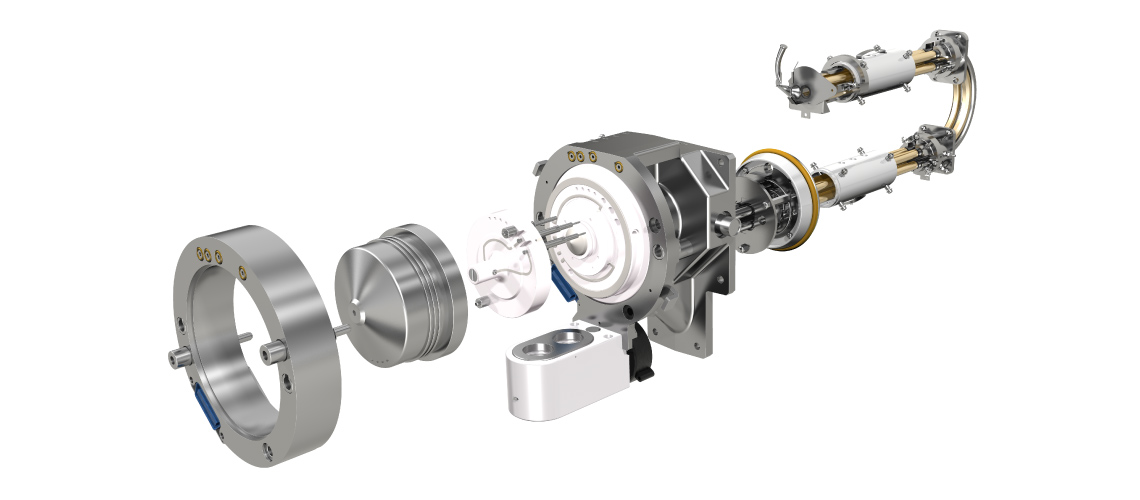
Figure 1. Quadrupoles are a set of 4 cylinder rods used in mass spectrometers.
As the name suggests, quadrupoles—or “quads”—are a set of 4 cylinder rods (Figure 1), and they are typically used in many different mass spectrometers to perform a variety of functions. Quads can function as mass analyzers to isolate a specific analyte or select sample ions based on mass-to-charge ratio (m/z) for transmission. They can act as transmission elements to capture ions and to cool and transmit ions with minimal loss through to the next element. They can also act as collision cells, where ions can be fragmented into sub-components.
As you can see, these highly flexible quadrupole rodsets are powerful elements, and they are the reason behind the improved sensitivity and selectivity of a mass spectrometry-based analytical method in comparison to other techniques, such as UV detection.
In a single quadrupole MS system, there is 1 mass analyzer quad that serves as a mass filtering or mass scanning quad. In a triple quadrupole MS/MS system, there are 3 mass analyzers that work together in 1 instrument, which provides more functionality and higher selectivity than a single quad. When performing quantification with a triple quad, the first and third quads serve as the mass filters, and the second quad can induce analyte fragmentation through interactions/collisions with the inert gas surrounding the quad (Figure 2). This added selectivity typically leads to improved method sensitivity due to decreased chemical background from your sample (For example, many ions have the same mass but different formulas, but frgamentation patterns and the mass of fragments can be unique).

Figure 2. The added selectivity of a triple quad decreases chemical background from samples, improving method sensitivity.
When to use a single quad vs. a triple quad
A single quad is suitable for studying specific ions, as it can stay tuned to a single ion for extended periods of time. It’s an excellent multipurpose instrument that offers dependability for users performing a variety of analysis types.
A triple quad excels at low limits of detection, especially in complex matrices, so it works well for a wide variety of quantitative analyses. Triple quad instruments are typically operated in multiple reaction monitoring (MRM) mode and can be set to target a specific compound with high specificity. Multiple fragment ions for that target compound can also be acquired, so users can quantify their compounds with a high degree of specificity within a single run. In addition, many compounds can be analyzed in a single run with no drop in quantitative performance.
The flexibility of a triple quad means it can be used in pharmaceutical or forensic laboratories where drug screening is performed, and in many other applications where high sensitivity and specificity are required. Another example application is the quantification of critical or low abundance compounds in complex biological matrices, such as THC metabolites in oral fluid.
What to consider when choosing your instrument
When choosing an instrument, labs looking for fast detection at low concentrations need to consider selectivity, along with sensitivity, linearity and reproducibility. In the following sections, we compare a triple quad MS/MS system (the SCIEX Triple Quad 3500 system) and a single quad MS system with these considerations in mind.
Selectivity
Detection on a triple quad MS/MS system results in higher selectivity due to the double mass filtering enabled by the 2 mass analyzing quads in the instrument. Figure 3 demonstrates the power of using MRM on a triple quad MS/MS instrument to detect a single signal for the analyte vs. using selected ion monitoring (SIM) on a single quad MS instrument, which results in multiple peak detections in the run. This highlights the large gain in specificity that is obtained when using MRM mode on a triple quad. Determining the “right peak” in SIM mode would likely require standard compounds to confirm and more extensive chromatography to separate.
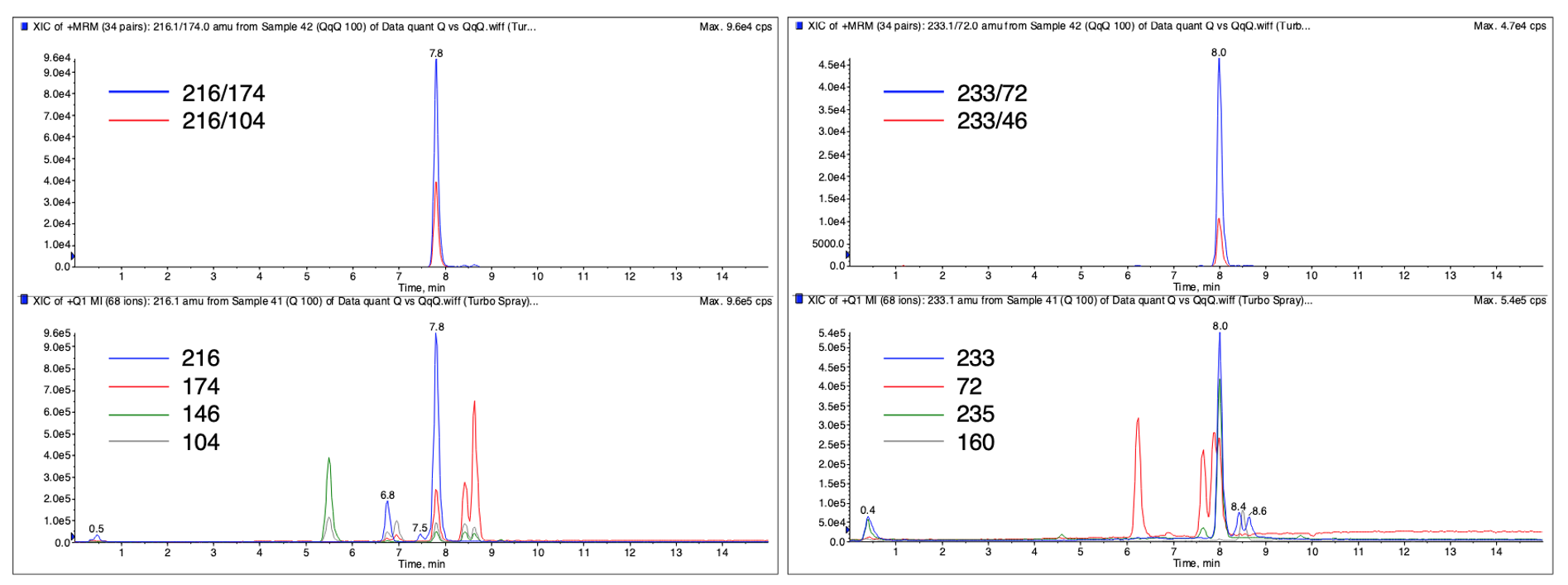
Figure 3. Comparison of selectivity detecting atrazine (left) and diuron (right) in MRM mode (top) and SIM mode (bottom) at 100 μg/L in drinking water.
Sensitivity, linearity and reproducibility
Detection on a triple quad MS/MS system using MRM mode also results in better sensitivity vs. using SIM mode on a single quad MS system, as shown in Figure 4. As you can see, the detected signal-to-noise (S/N) is higher, resulting in lower limits of quantification (LLOQ). The typical difference in sensitivity observed is at least 1 order of magnitude.
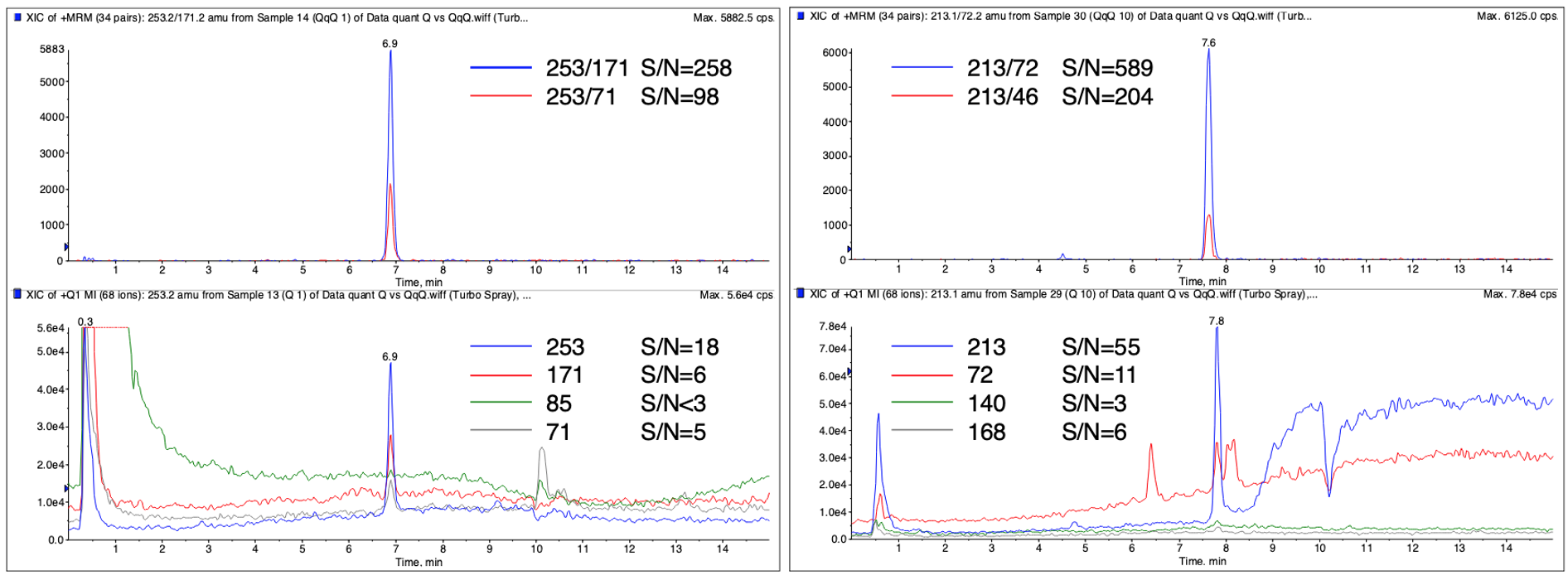
Figure 4. Comparison of sensitivity detecting 1 μg/L hexazinone (left) and 10 μg/L chlortoluron (right) in MRM mode (top) and SIM mode (bottom) in drinking water.
Generally, a wider linear range can be obtained for quantification if a triple quad is used in MRM mode because of increased selectivity, allowing detection at a lower concentration (Figure 5). The upper
limit of quantification of SIM and MRM is typically comparable due to saturation of the ion source or detector. The linear dynamic range of quantification in MRM mode using electrospray ionization is often 1 order of magnitude better than using SIM mode.
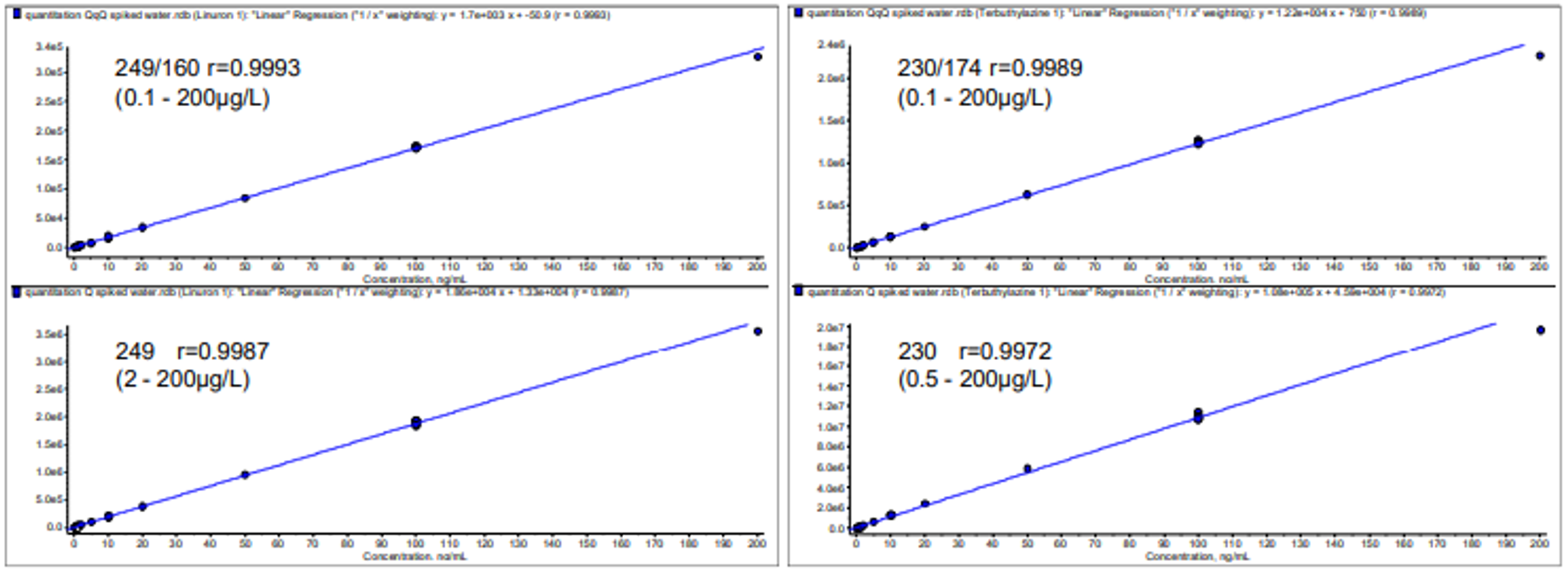
Figure 5. Comparison of linearity detecting linuron (left) and terbuthylazine (right) in MRM mode (top) and SIM mode (bottom) in spiked drinking water samples.
Reproducibility is an expression of how well the data can consistently be replicated. In this case, the additional specificity due to using MS/MS allows more accurate and reproducible quantification. A triple quad MS/MS system provides %CV below 10 at the LLOQ and below 5 at higher concentrations. The reproducibility on a single quad MS system is significantly lower (Table 1).
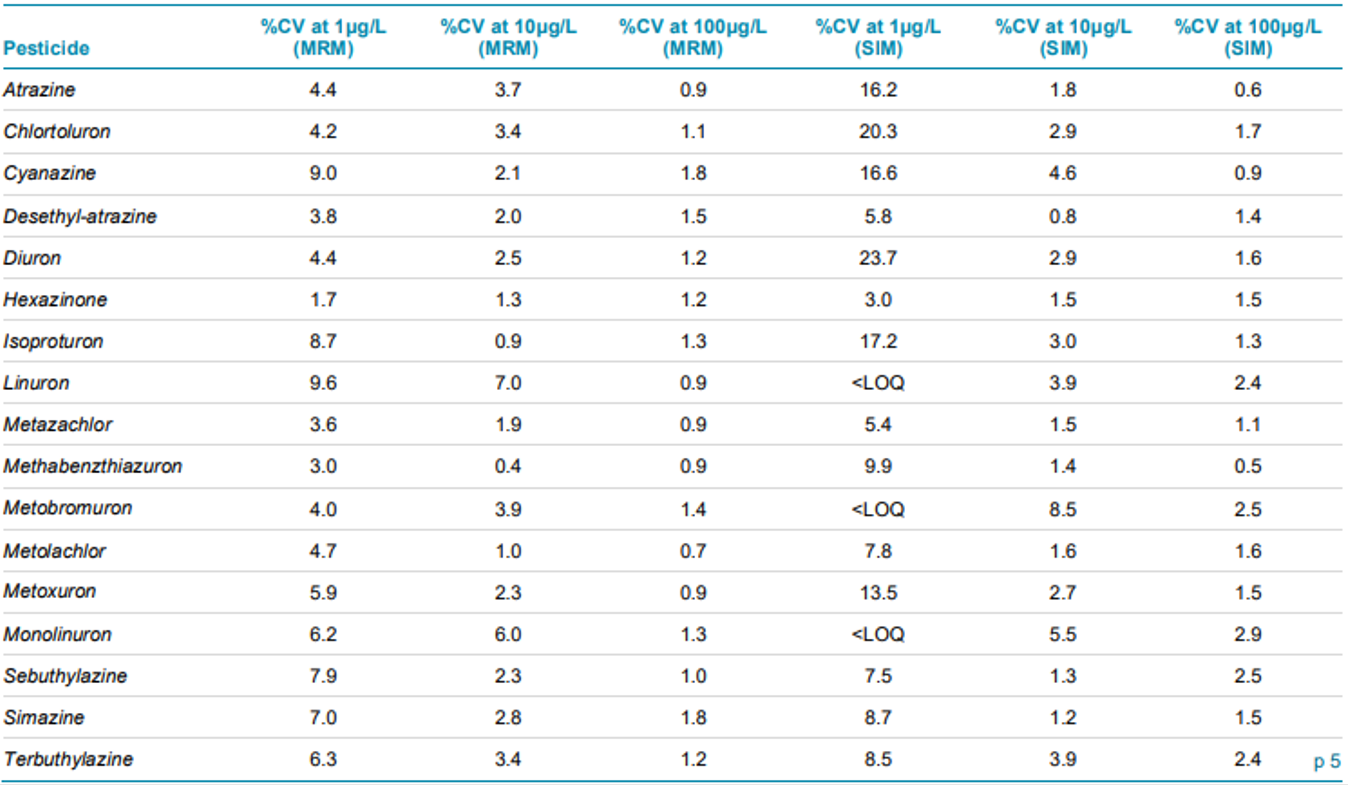
Table 1. Reproducibility (%CV) of detected pesticides in MRM mode and SIM mode at different concentrations.
Next steps
A triple quad instrument, such as the SCIEX Triple Quad 3500 system, can help you increase the selectivity of your analytical methods and gain higher sensitivity, a wider dynamic range and enhanced reproducibility. To learn more about how this system can help you achieve these results in your own laboratory, download the SCIEX Triple Quad 3500 system compendium.
If you require additional training, check out the online and in-person courses available in the SCIEX Now Learning Hub to help get your lab up to speed. And be sure to take advantage of our new digital tool, the SCIEX Now Learning Manager, which provides a centralized digital platform that enables lab directors to spend less time and resources tracking the training competencies of their staff and offers access to current content from leading industry experts at SCIEX. Browse and enroll now!
This is part 2 of a 3-part “Back to the new basics” series on mass spectrometry. Look for the next installment soon.
Part 1: Making the leap from GC-MS to LC-MS
RUO-MKT-18-14080-A






 Contact Support
Contact Support
0 Comments